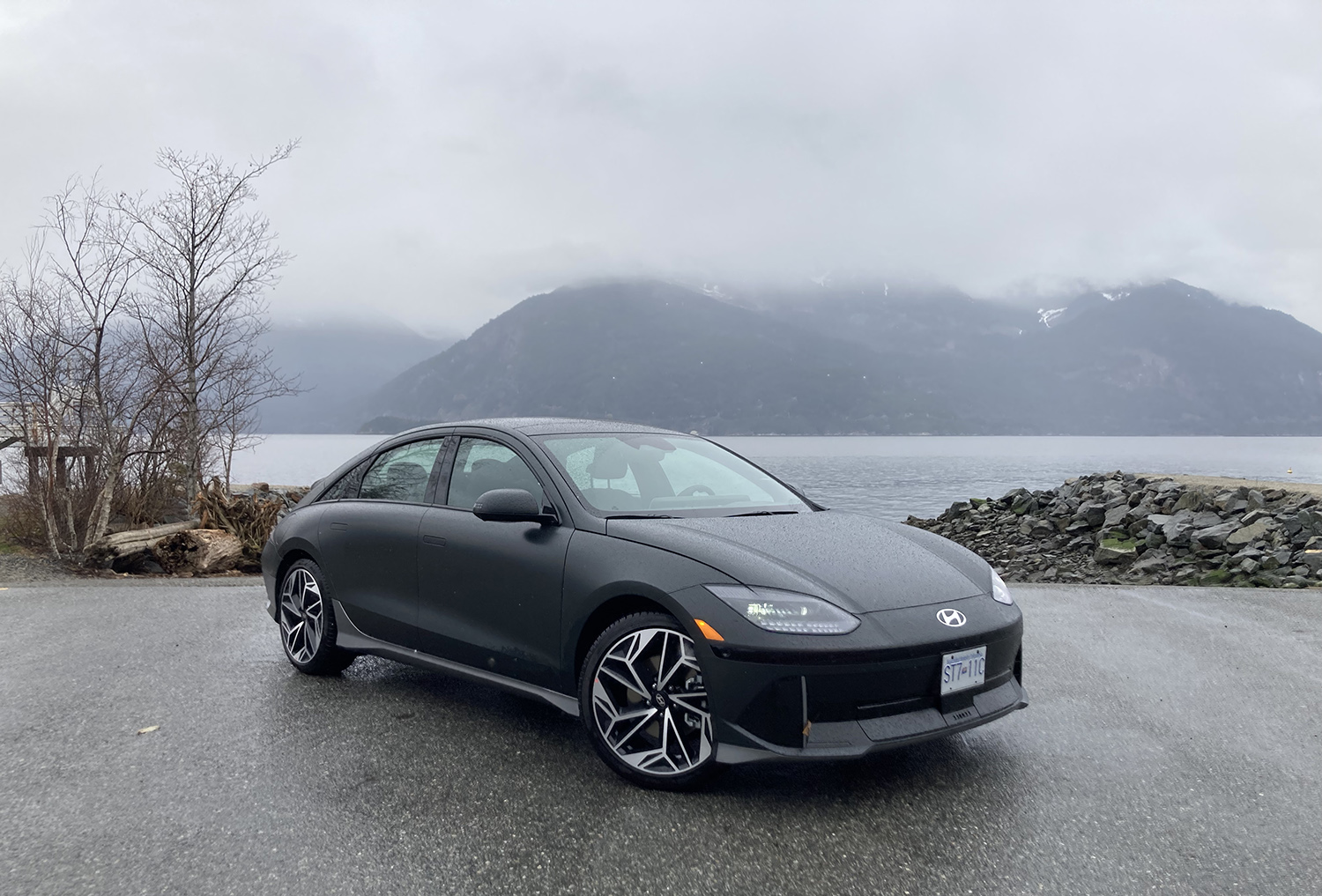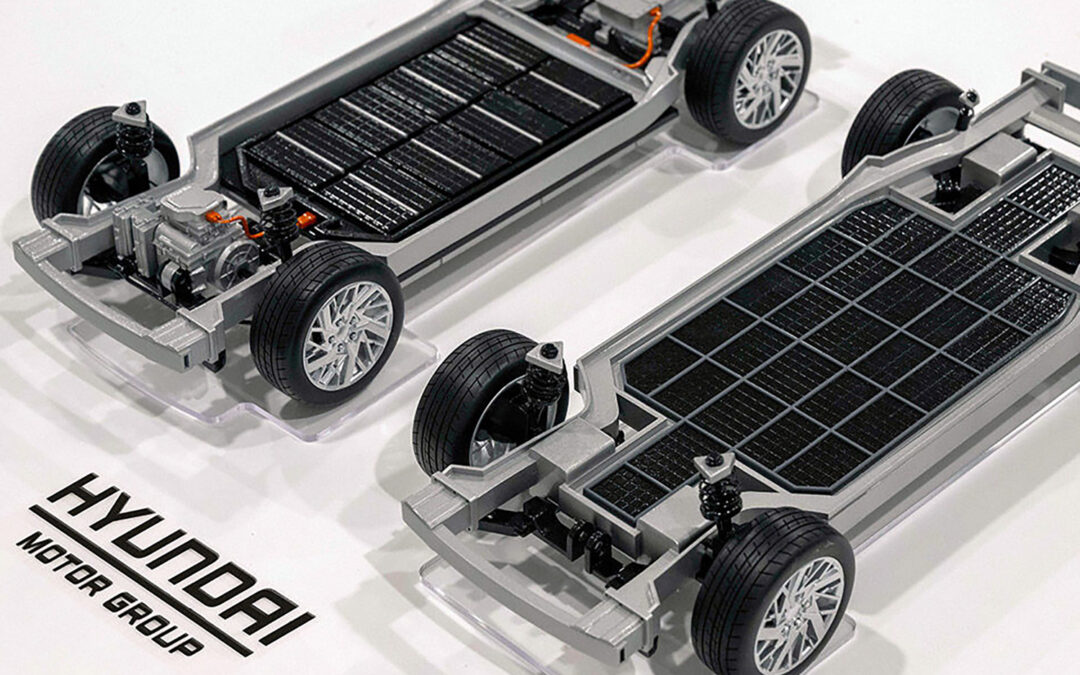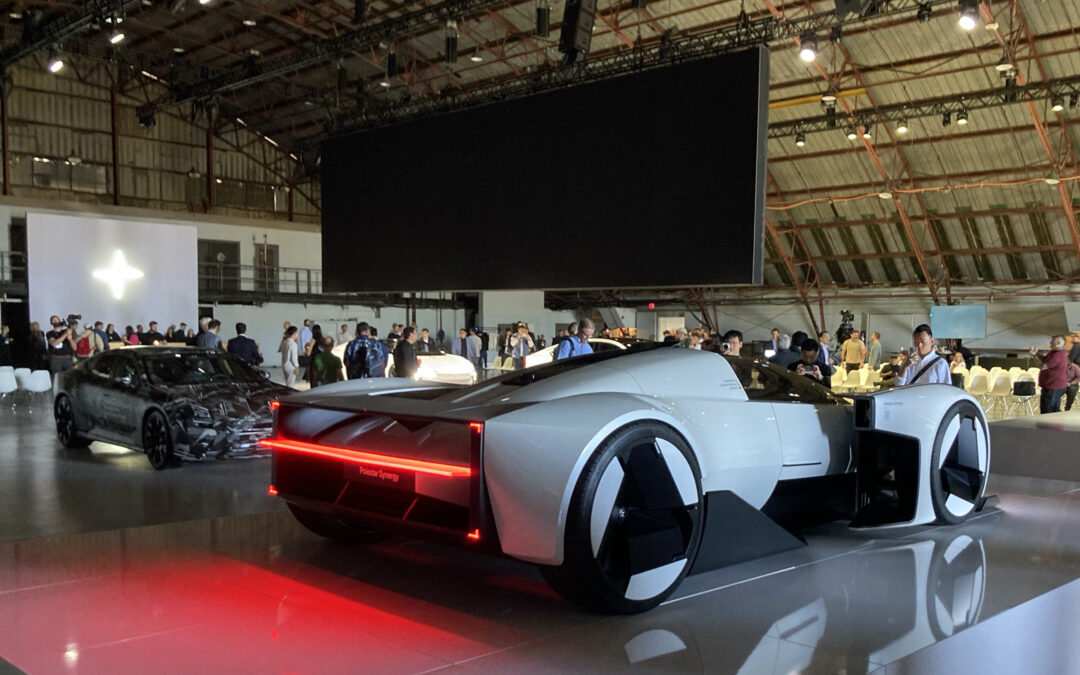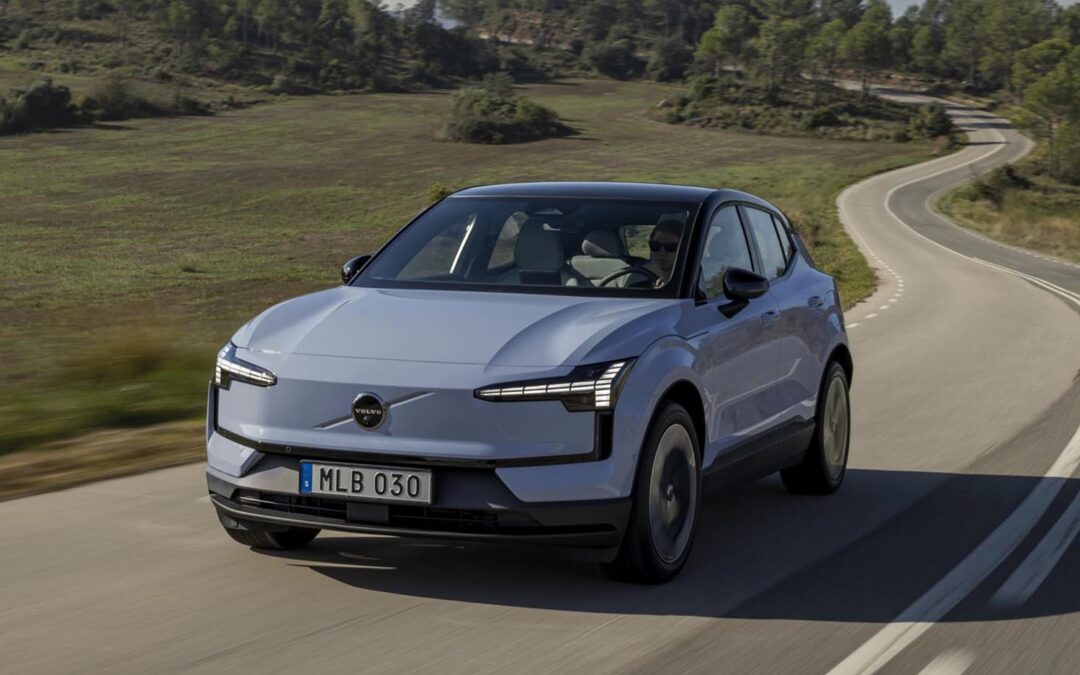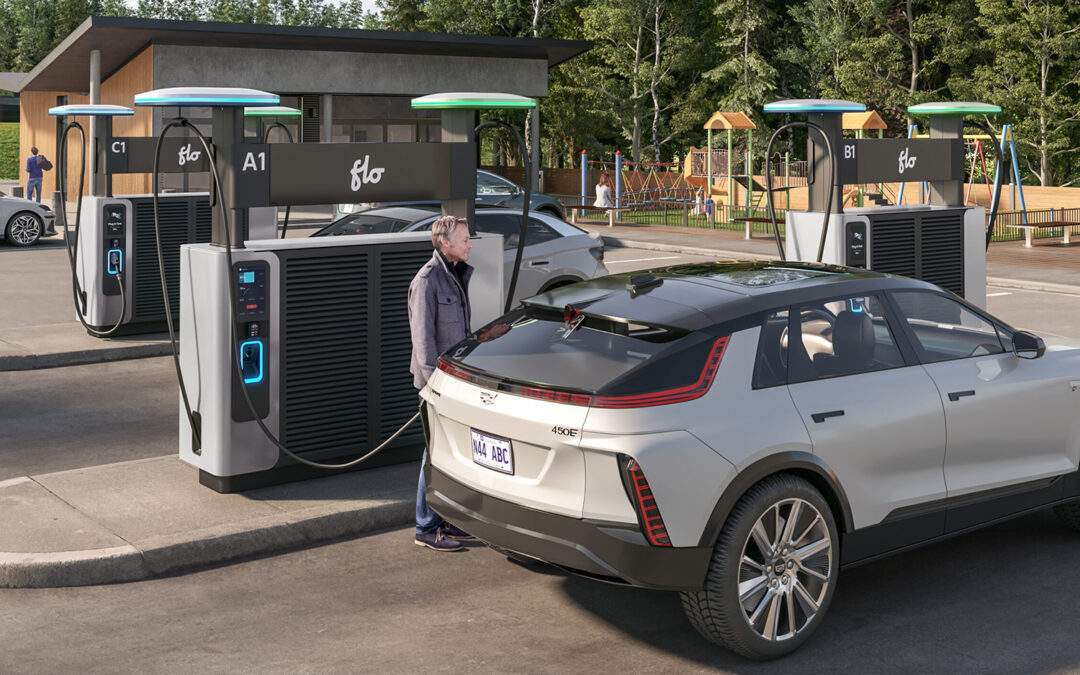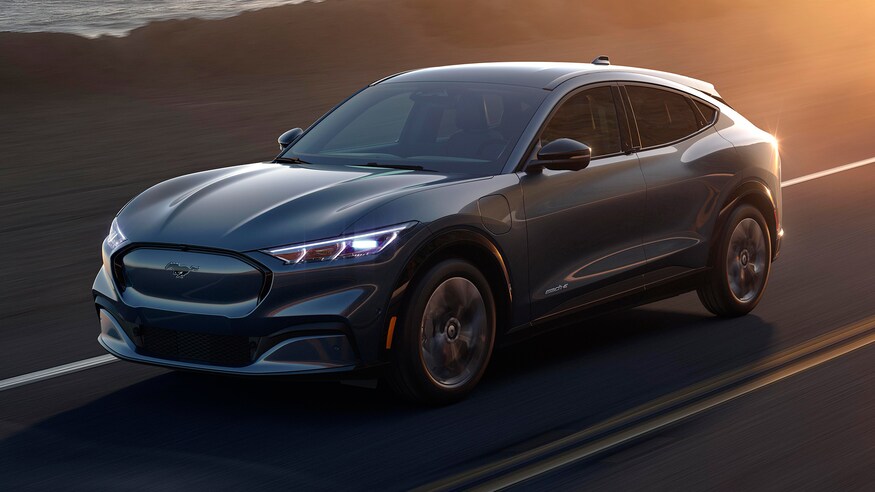With all due respect to the good folks at Hyundai, it’s impossible to look at its new Ioniq 6 compact electric sedan without comparing it to its direct competitor. And no, we’re not talking about the Ioniq 5; shoppers will want either the crossover (5) or the sedan (6). No, let’s look at the elephant in the room: the Tesla Model 3.
Just take a look: both the Ioniq 6 and Model 3 are compact sedans (an increasing rarity in the automotive world, considering the domination of the crossover/SUV), they sport similar long ranges and a similar entry price point. You could also throw the Polestar 2 into the mix here, but the Model 3 is the second-best selling electric vehicle in the world (only behind its sibling, the crossover-style Model Y) so you can see why that car is definitely in Hyundai’s crosshairs.
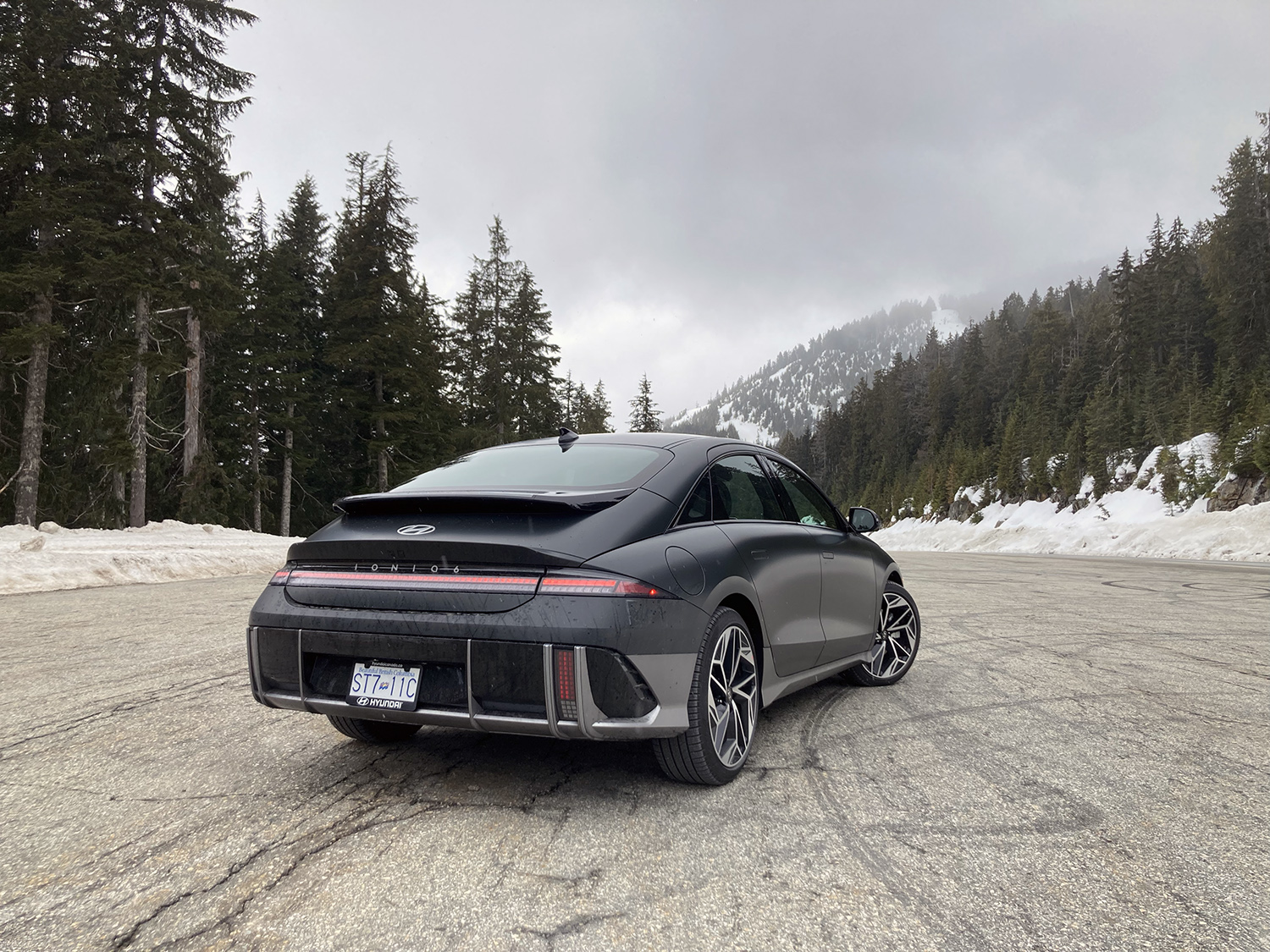
2024 Hyundai Ioniq 6 / Neil Vorano, TheCharge
Spoiler alert: the Hyundai has a lot going for it.
Okay, let’s first give Hyundai it’s due and focus on what has turned out to be another electric milestone for the South Korean brand. The Ioniq 6 is Hyundai’s third all-electric vehicle in its current fleet, joining the Ioniq 5 and the Kona crossovers. This one is a true sedan, even having a real trunk instead of a cargo hatch like the Tesla.
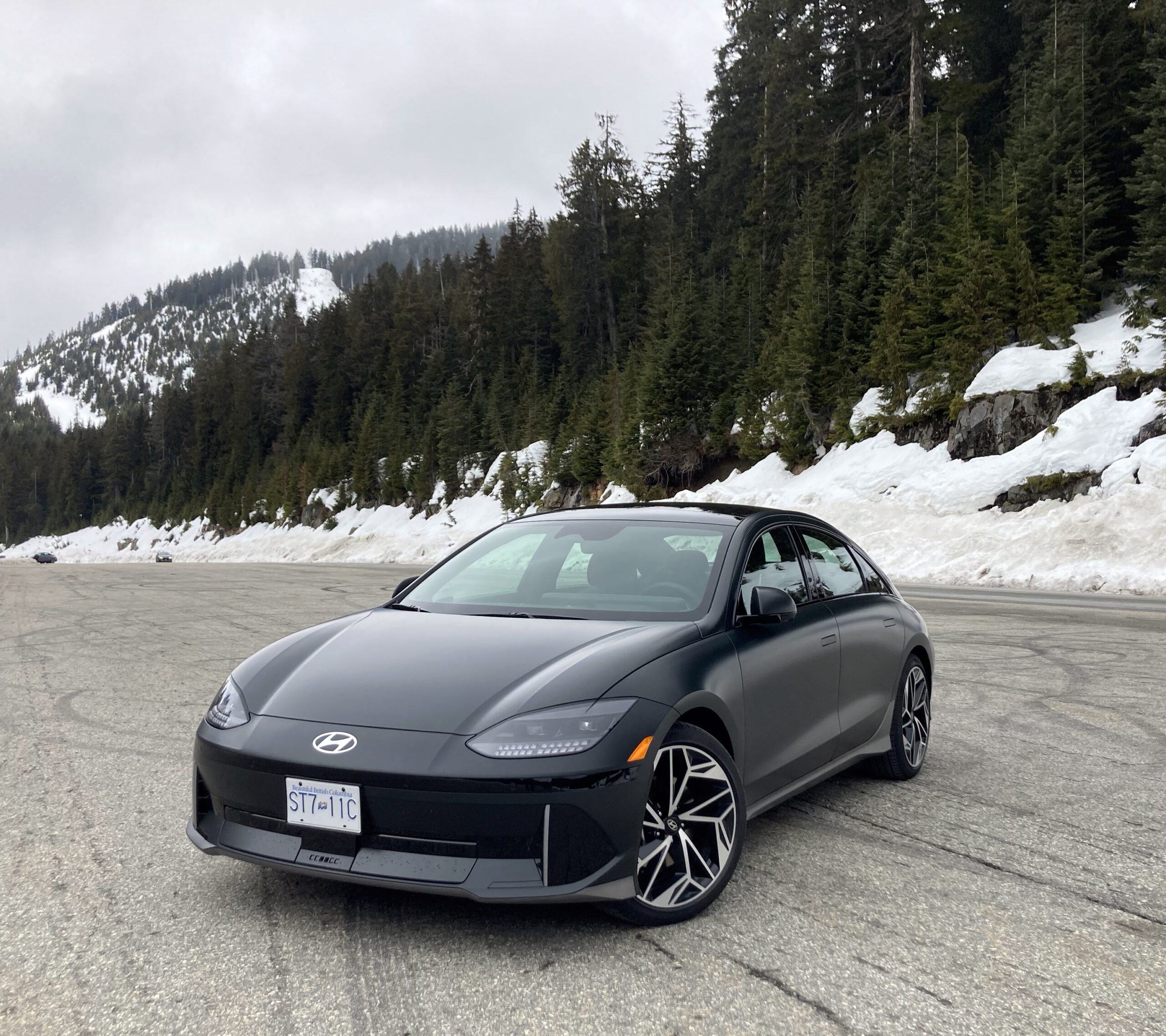
2024 Hyundai Ioniq 6 / Neil Vorano, TheCharge
Outside, it’s attractively swoopy, but that’s not just for looks: with a coefficient of drag (Cd) of just .22, it’s one of the most aerodynamic vehicles on the road today. And National Resources Canada has rated the Ioniq 6 (with 18-inch wheels) the most efficient vehicle in Canada, electric or otherwise. So, that’s certainly a check in the positive column.
The Ioniq 6 comes in three flavours for Canada; the base Preferred RWD Long Range with 18-inch wheels starts at $54,999, and gets a whopping 581 km of range. The Preferred AWD Long Range with 18-inch wheels starts at $57,999 and has 509 km of range. The top-tier Preferred AWD Long Range with Ultimate Package and 20-inch wheels is $63,999, but takes a hit with range at 435 km – and that’s entirely due to the larger wheels.
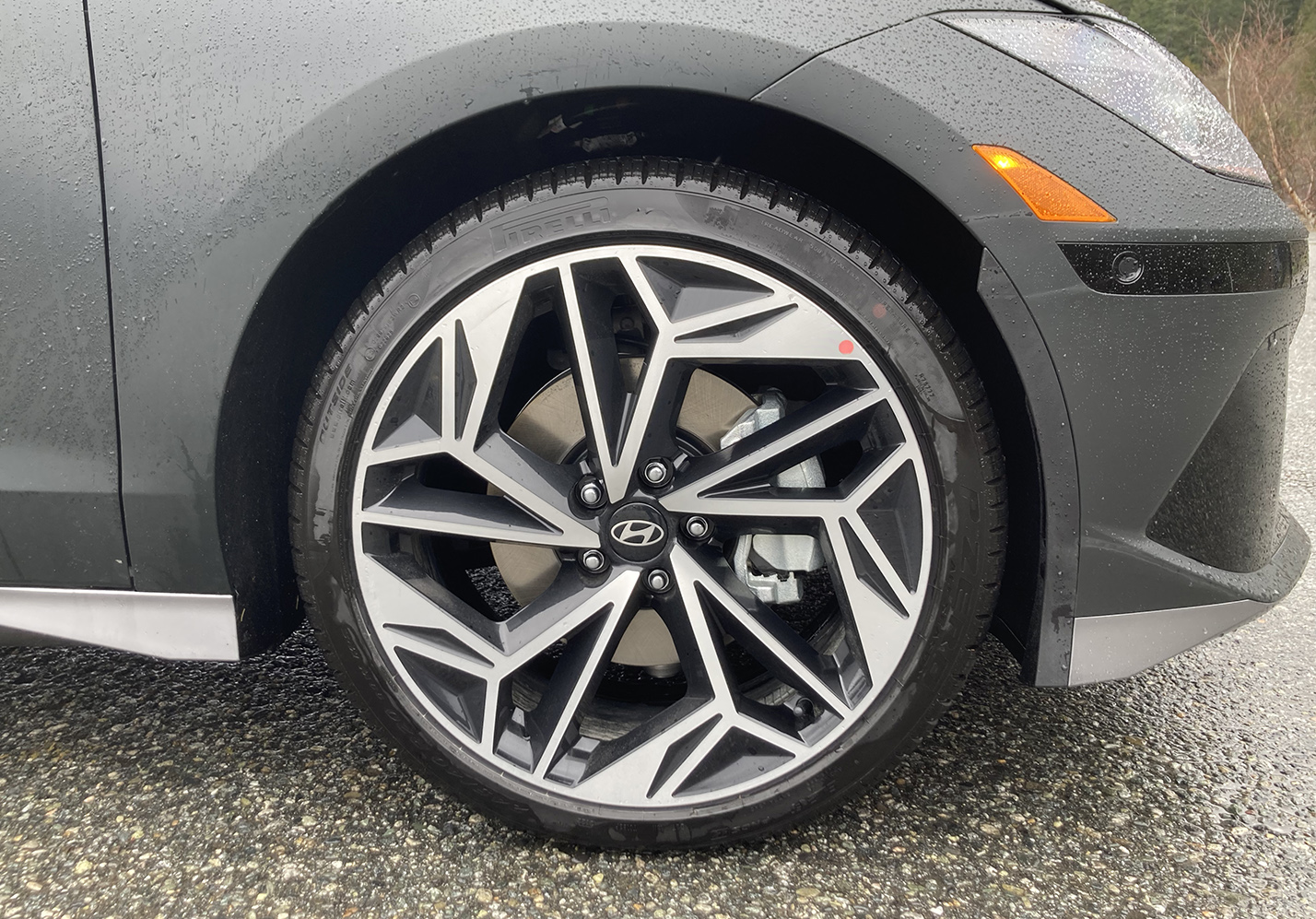
2024 Hyundai Ioniq 6 / Neil Vorano, TheCharge
Regardless, pricing is definitely in Hyundai’s favour. While the base RWD Model 3 starts at $54,990 (nine dollars less than the Hyundai!), it has just 438 km of range. For the top-end Model 3 Performance with 507 km of range and AWD, you need to fork out $72,990! That’s a big jump. And the Ioniq 6 is eligible for federal EV incentives.
Another win for Hyundai is the design itself. Outside, the Ioniq 6 is a distinctive looker, unlike anything on the road despite being a conventional sedan. From behind, you could mistake it for a Porsche 911 with its sloped rear end. The Ioniq 5’s ‘pixel’ light design is continued here both inside and out, and it also features flush exterior door handles for better aero.
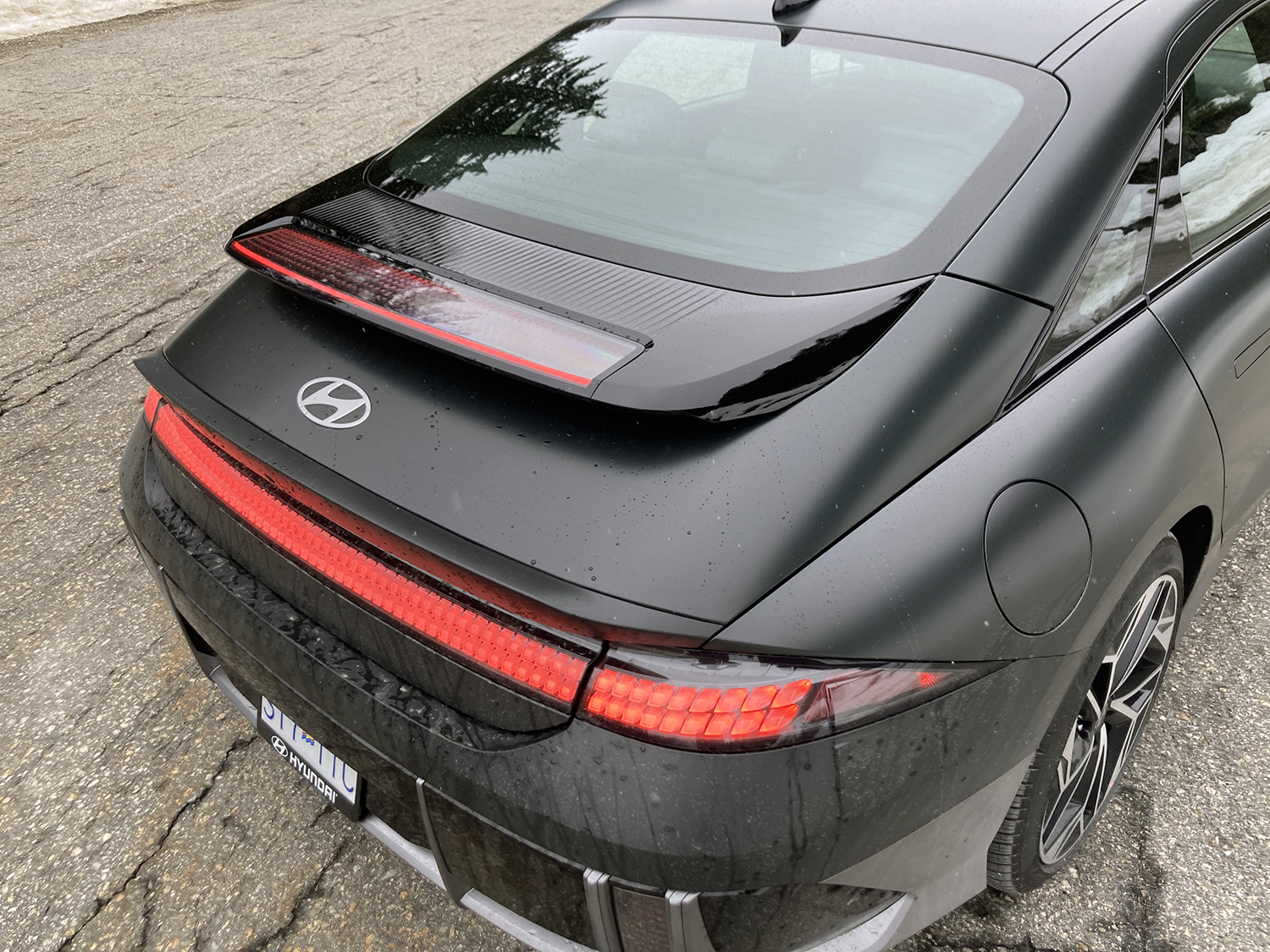
2024 Hyundai Ioniq 6 / Neil Vorano, TheCharge
Inside is a delight; it sports a 12.3-inch driver display and an adjoining 12.3-inch infotainment screen, which I much prefer over the Model 3’s larger, portrait-situated screen that dominates the interior. You can get an all-black cloth or leatherette interior, but it’s the two-tone grey leatherette option that really stands out here.
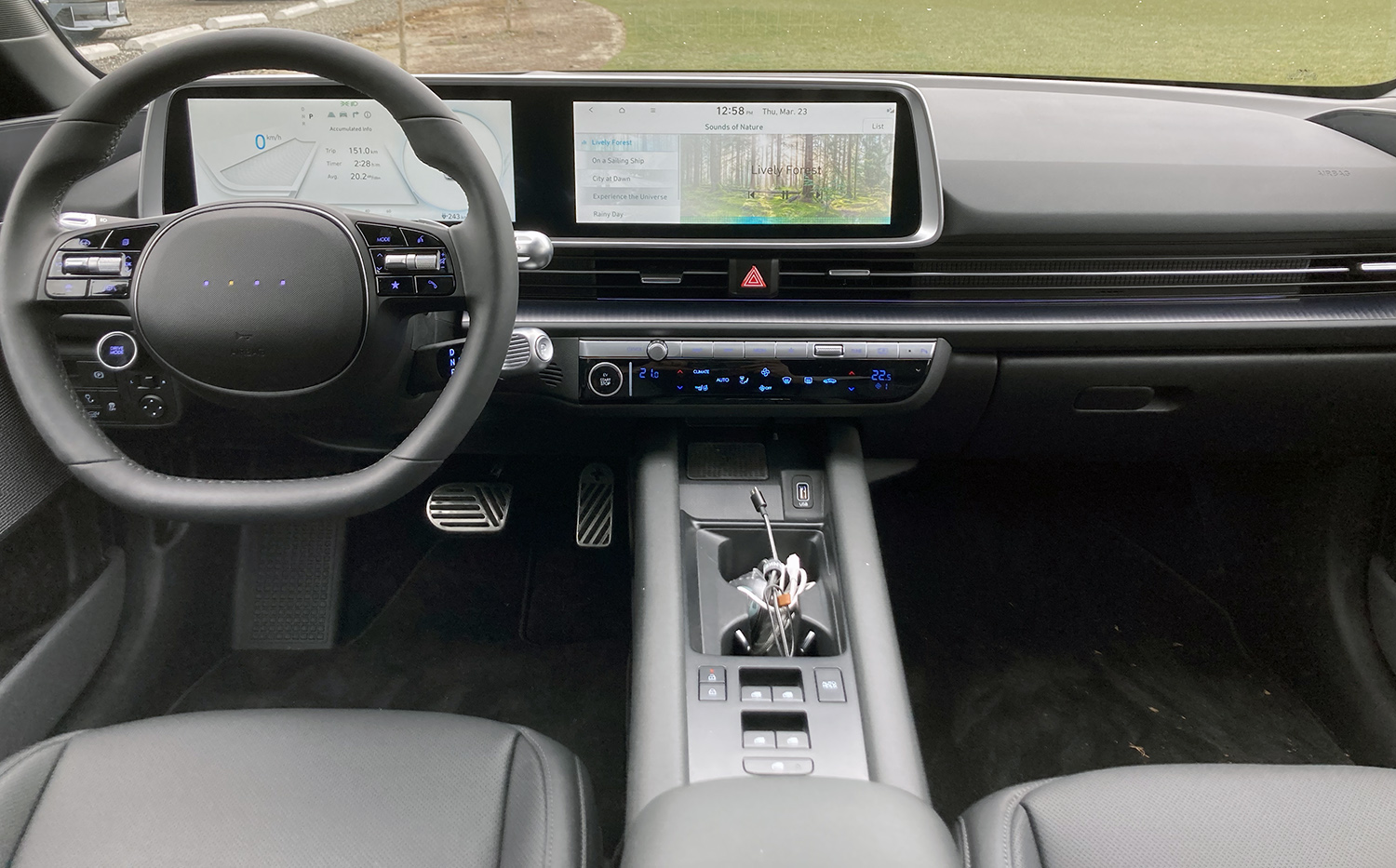
2024 Hyundai Ioniq 6 / Neil Vorano, TheCharge
Regardless of your choice, the cabin is spacious even for those in the rear seats, with plenty of legroom. The big hit, however, is rear headroom; with that sloping roof, passengers will get their hair brushed on the headliner.
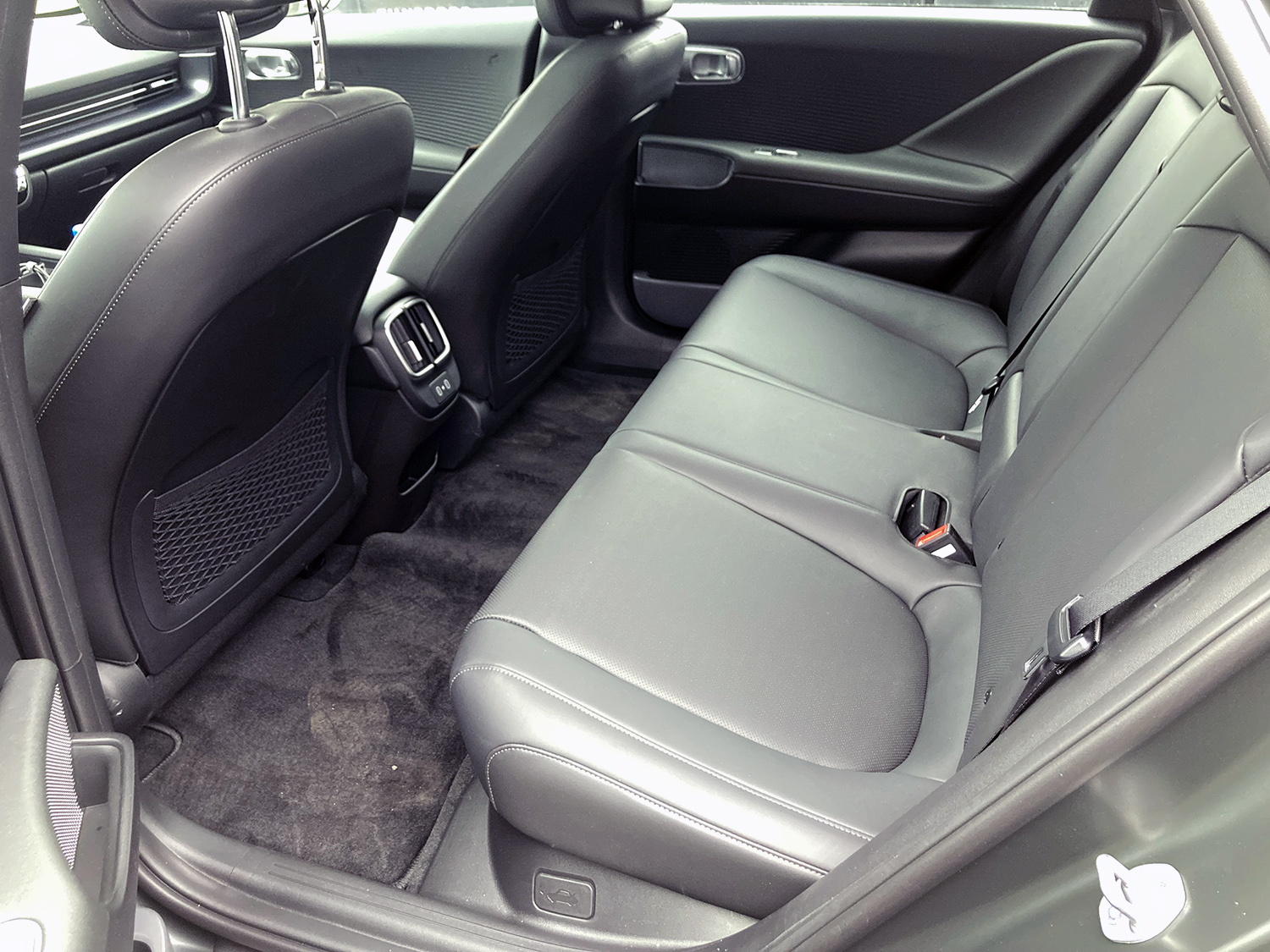
2024 Hyundai Ioniq 6 / Neil Vorano, TheCharge
It is, however, minimalistic and stylish inside. The door cards are ribbed, and LED accent lighting adds drama at night. While it all feels well put together, some of the materials are hard plastic and feel a little cheap.
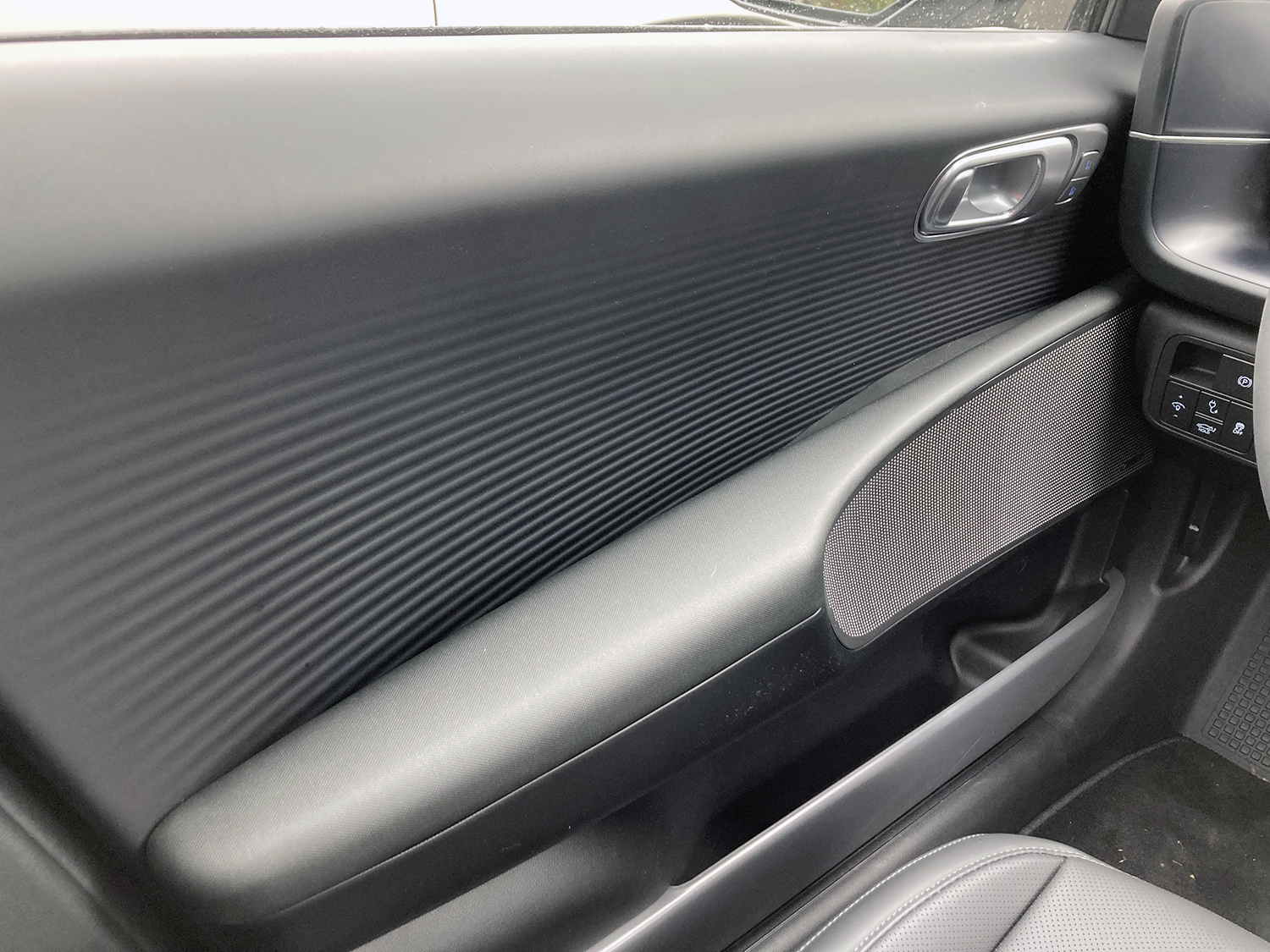
2024 Hyundai Ioniq 6 / Neil Vorano, TheCharge
But there are clever touches inside, such as the handy cubbyhole under the centre console that will fit large bags. And I also like that there are hard buttons for various features, instead of having to go through infotainment menus (though the heated seats are menu-operated, unfortunately.) Overall, I’d take this interior over the Model 3.
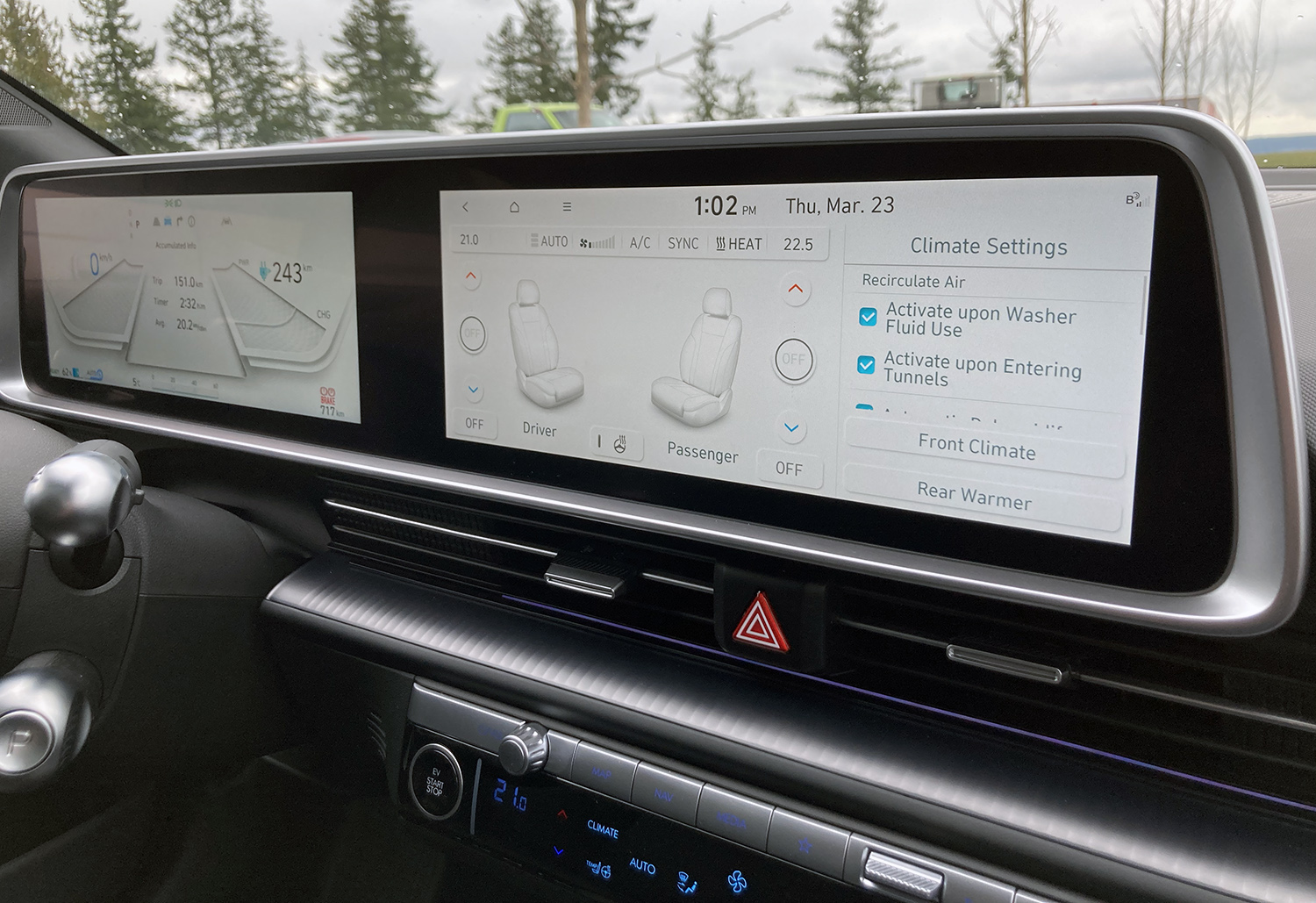
2024 Hyundai Ioniq 6 / Neil Vorano, TheCharge
It also offers a full suite of driver assist and collision avoidance aids, such as Highway Driving Assist II (its smart cruise control). The infotainment system is intuitive and easy to use, and includes Apple CarPlay and Android Auto. Its only frivolous addition is the range of soothing tones, such as Fireplace or Rain, that actually do help calm driver and passengers.
Because of that swoopy shape, cargo area takes a big hit. The trunk is a scant 316 litres, barely enough for luggage for two. The Model 3 wins here with 516L of trunk space. You really have to want the sedan when deciding between that and the more practical and spacious Ioniq 5.
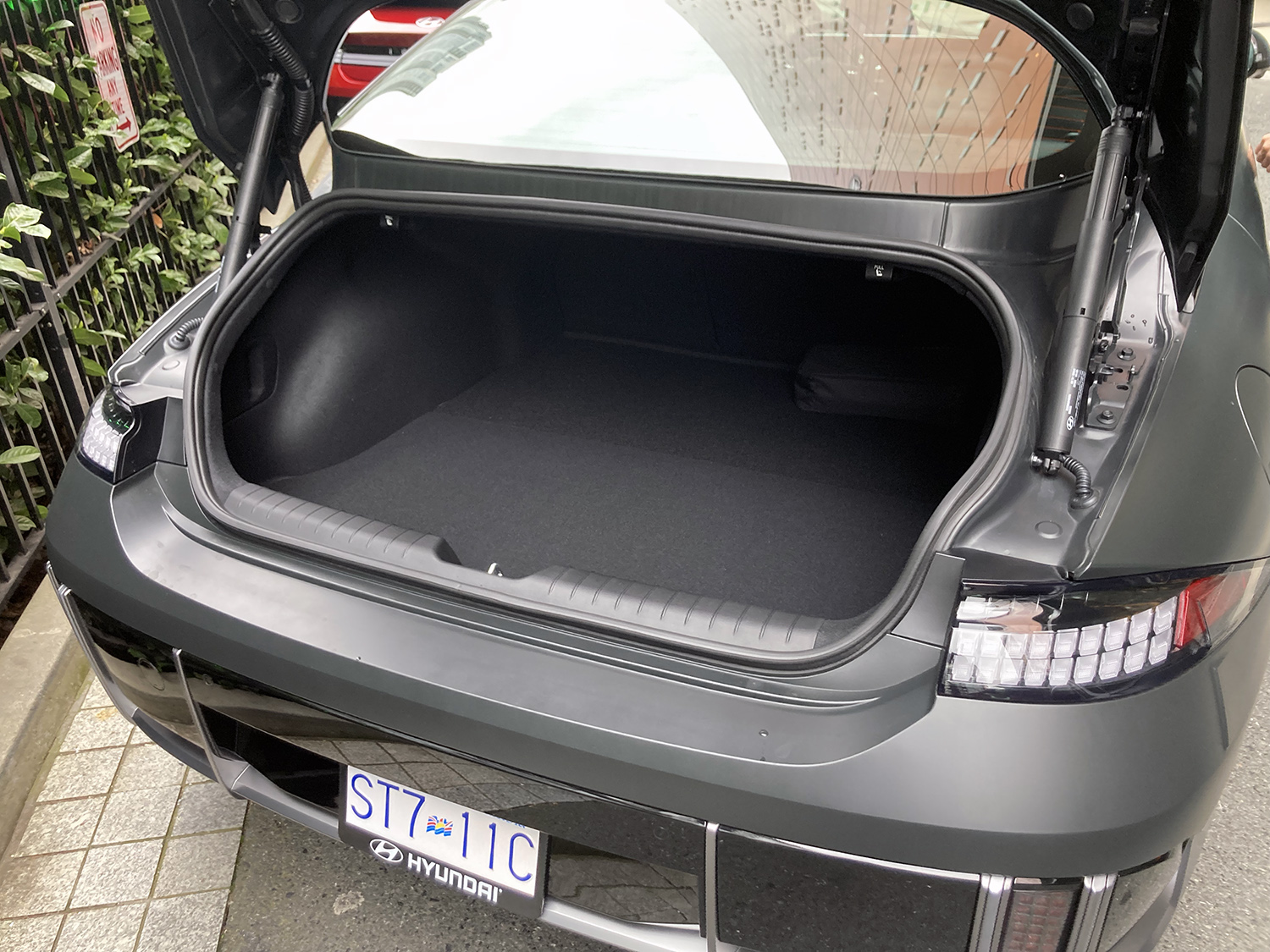
2024 Hyundai Ioniq 6 / Neil Vorano, TheCharge
Underneath, the Ioniq 6 uses the same 77.4 kWh battery as the Ioniq 5, but better aerodynamics means it squeezes out more range. The base RWD model gets 225 hp and 258 lb.-ft. of torque from its single motor, while the AWD versions sport a heftier 320 hp and 446 lb.-ft. from their dual-motor setups. And its 800V compatible charging setup and 350 kW charging speed means the battery can be charged in 18 minutes, or you can add up to 100 km of range in five minutes. That is, of course, if you can find a Level 3 charger that fast. A battery fill-up with a conventional 50kW setup will take 73 minutes.
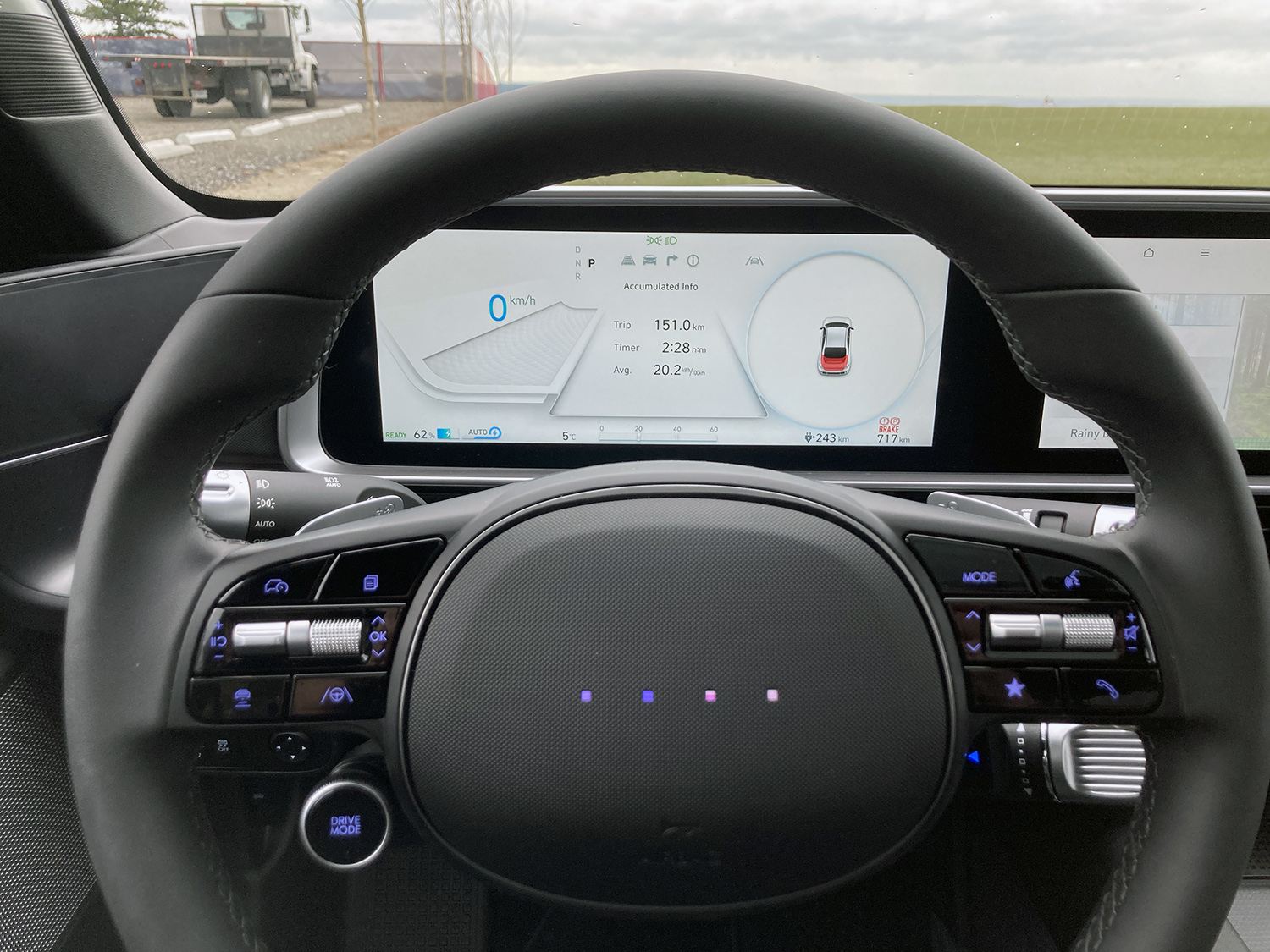
2024 Hyundai Ioniq 6 / Neil Vorano, TheCharge
With the Preferred AWD Long Range with Ultimate Package, our tester for the day, acceleration was prodigious but not overwhelming, like other EVs. Steering was weighted, though there’s not much feel coming through the wheel. But the ride is comfortable, quiet and coddling without being overly sporty. Wind and tire noise are kept to a minimum.
Three drive modes will change up the acceleration and brake regen, which can also be controlled with steering wheel paddles up to full one-pedal driving. Overall, with a few hours behind the wheel, it feels much better engineered and put together than the Tesla.
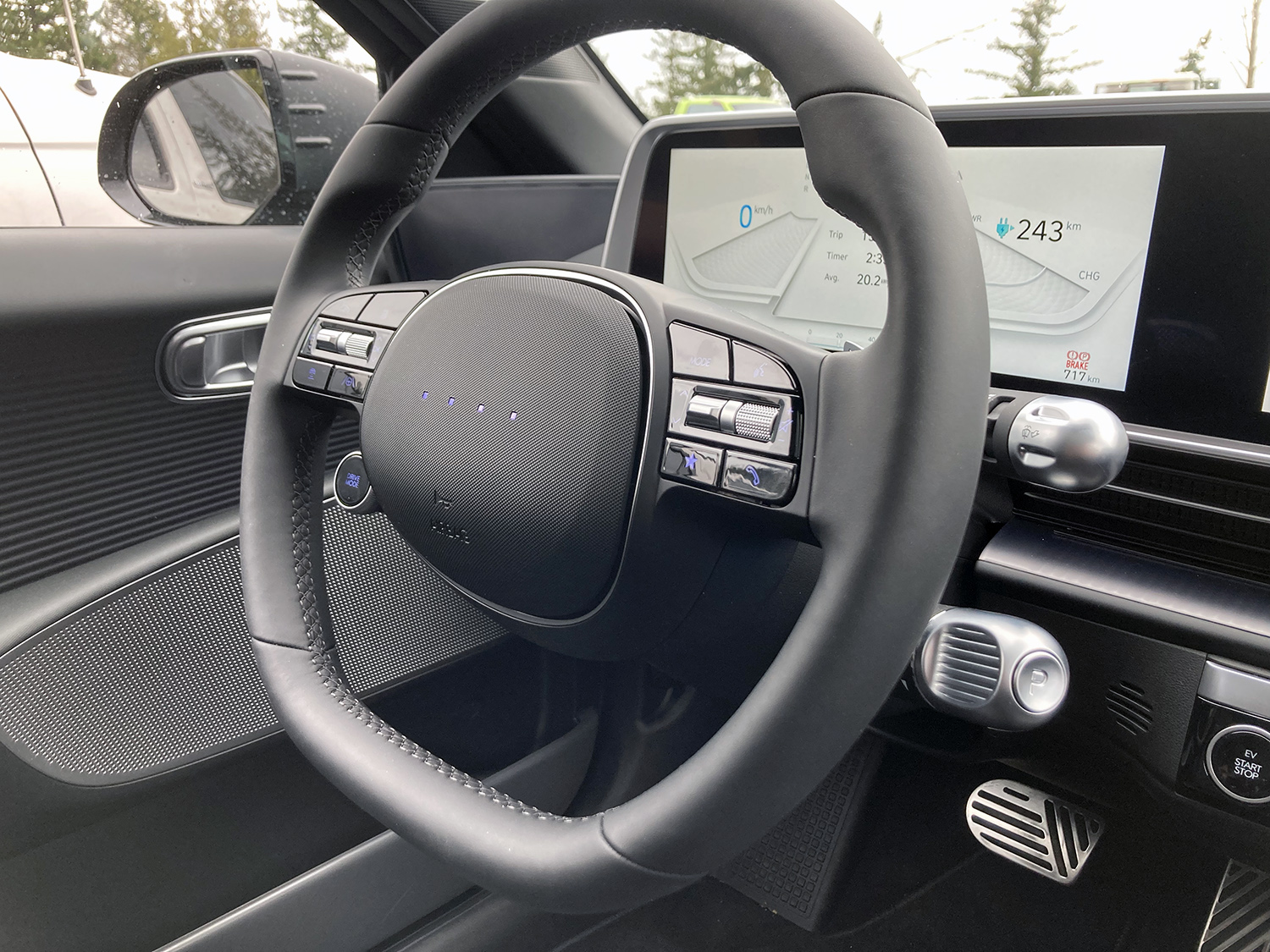
2024 Hyundai Ioniq 6 / Neil Vorano, TheCharge
But let’s give Tesla its due here; there are two things going for the Model 3 compared with Hyundai. First off, Tesla’s Supercharger network is far superior to the rag-tag collection of CCS-port charging networks across North America; Superchargers account for more than 20,000 out of almost 35,000 overall Level 3 fast charging ports across North America, according to National Resources Canada. Plus, they have proven to be far more reliable, faster charging and easier to use.
Second, and perhaps more important, is that Tesla has managed to get cars into people’s driveways within a couple months of ordering, and many times even sooner. Hyundai (and to be fair, every other carmaker) has been severely affected by the chip shortage and other supply chain issues, meaning potential customers have been forced to wait a year or more for their Ioniq 5 vehicles. The company has also allocated just 2,500 Ioniq 6s to Canada this year, so prospective buyers will have to move quickly.
Last year, Hyundai was second only to – you guessed it – Tesla in overall EV sales. The Ioniq 6 will help add to those numbers, and for the most part, it’s a clear winner over its main competitor, the Model 3. Now, Hyundai just has to put them on dealer lots – and in customer driveways.
